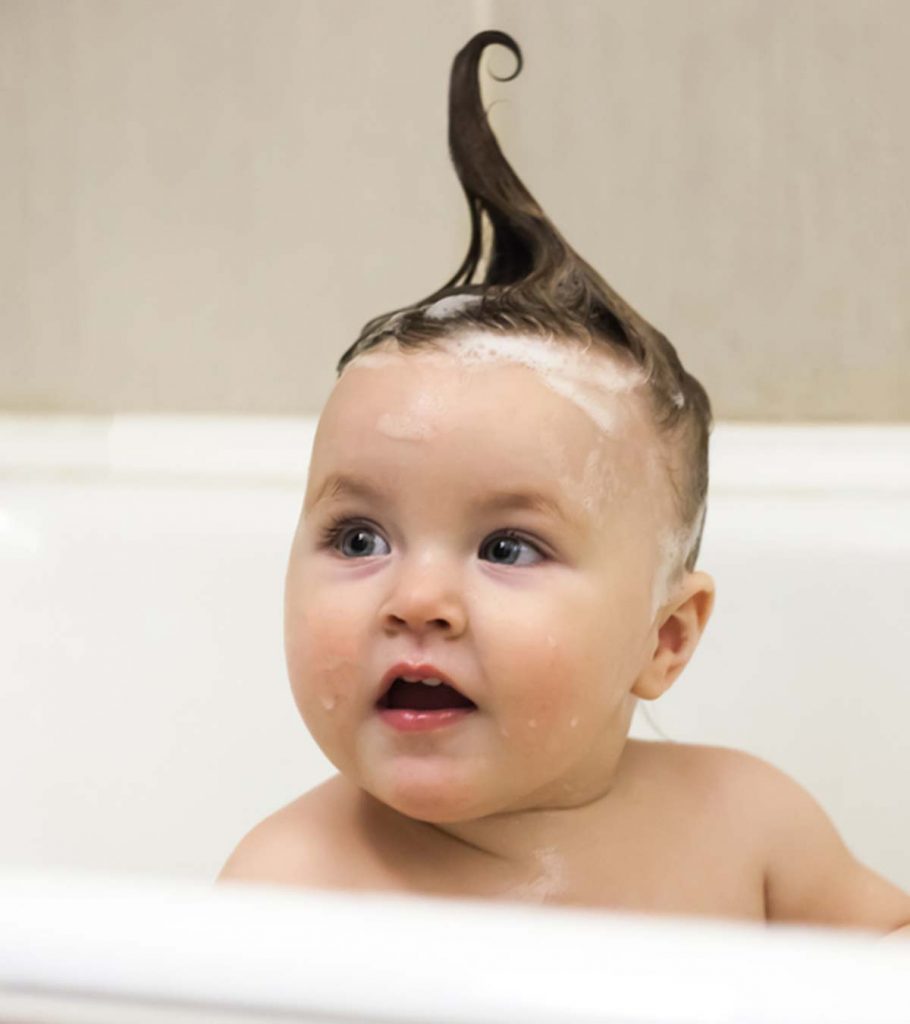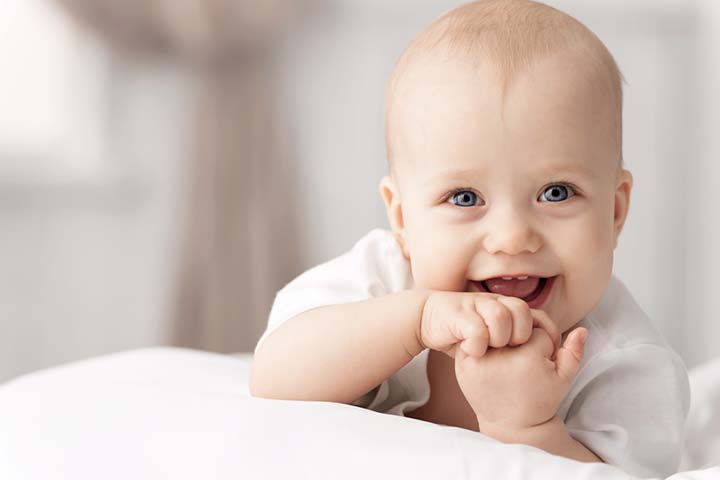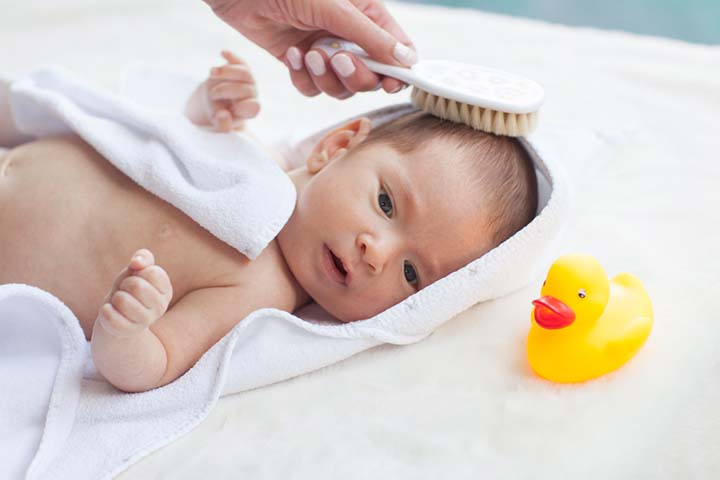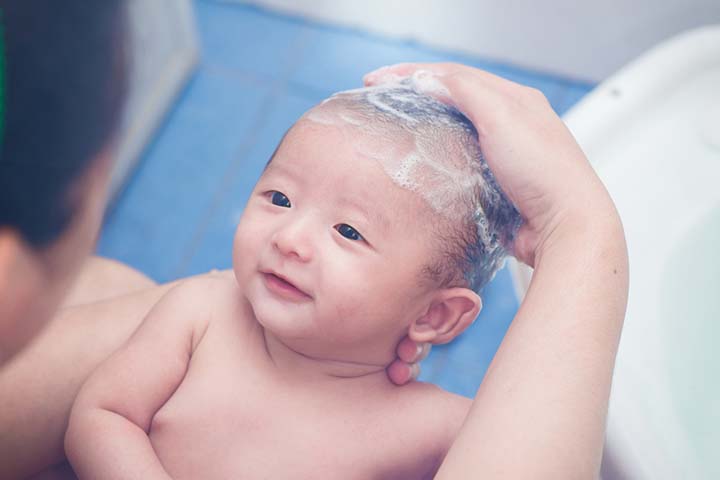Every baby is adorable and unique, as is their hair, whether straight, wavy, or curly. Each baby’s hair growth pattern could be different. Some newborns are born with a full head of hair, while others are born with only a few wisps. It’s quite normal for babies to have less hair for the first six months, so it should not be a cause for concern.
Genes mostly determine your baby’s hair and skin color and, to a certain extent, their hair growth pattern as well. However, consuming a nutritious diet and following a basic hair care routine can promote their hair growth.
This post discusses some tips to keep your baby’s hair silky and healthy while also helping it to grow. However, keep in mind that the advice in this post may only aid in giving your baby’s hair the boost it needs to grow to its full potential since the length and thickness of hair depend on various factors.
Why Do Babies Shed Hair?
It is common for babies to lose hair during the first six months, as the baby’s hair falls off to make way for mature hair follicles. They also lose their hair when the scalp gets rubbed against the mattress or due to head banging behavior — hair loss due to these factors usually get corrected on its own.
Most babies lose hair on the back of the scalp at four months. The hair grows back as the baby grows. However, if your baby is older than six months, is shedding a significant amount of hair, or has signs of infection on the scalp, then consult a pediatrician (1).
To know more about why babies lose their hair, read an informative article here.
Ways To Support Your Baby’s Hair Growth
1. Give them nutritious food
While hair growth is largely based on genetics, nourishment and hygiene play an important role. Give them nutritious food rich in zinc, proteins, and vitamins A, B, and D, as these can help promote hair growth.
If your infant is six months old and has started consuming solids, include the following foods in their diet.
- Vitamin-A rich foods such as ripe mangoes, oranges, sweet potatoes, squash, and carrots
- Dark, leafy green vegetables rich in iron and vitamins
- Small quantities of egg yolk and cheese
- Beans, meat, and whole grains (2)
2. Give them a hair oil massage
Mineral oils play an important role in protecting hair, as these oils can penetrate the hair and reduce the amount of water absorbed by the hair (which might damage the hair). Applying oil on a regular basis can help with the natural distribution of oils along the shaft and prevent hair breakage.
Studies suggest that coconut oil massage helps reduce protein loss from the hair, which might help promote hair growth (3).
To reduce hair loss and promote thick and fuller hair, massage your baby’s or toddler’s scalp with coconut oil a few times a week. This will not only prevent the scalp from getting dry, but also help eliminate cradle cap.
Apply a few drops of organic or extra-virgin coconut oil on your baby’s scalp and massage it. Leave it for 15–20 minutes and rinse with warm water.
3. Apply olive oil
Olive oil has also been one of the preferred oil choices for hair massage as it provides several benefits, such as strong hair, increased hair elasticity, and scalp nourishment due to its moisturizing properties (4). Therefore, you can also use olive oil for baby’s hair growth. Olive oil can also be used to treat cradle caps in newborns. Use a tiny amount of pure organic olive oil and rub gently on your baby’s scalp. After 15 minutes, comb out the flakes and wash the scalp with a mild shampoo. However, ensure not to leave any olive oil on the baby’s scalp for a longer time as it can block the pores (5).
4. Shampoo their hair regularly
It is important to shampoo your baby’s hair twice a week to remove the excess oil. If your baby has a cradle cap, it is advisable to apply an emollient, such as white petroleum, mineral oil, or baby oil, before shampooing the hair (6).
Apply baby shampoo on the scalp and gently massage. Leave it for 5–10 minutes, and rinse with lukewarm water. This might help remove dirt and excess oil that might be blocking the hair follicles, thus promoting hair growth.
5. Brush the scalp
Hair or no hair, you need to incorporate grooming into your baby’s routine and brush your baby’s scalp regularly with a brush that has soft bristles. Anecdotal evidence suggests that gently combing, brushing, or massaging your baby’s scalp might stimulate hair growth.
It might also help remove dead cells and improve blood circulation in the scalp. Brushing is also a way to relax your baby; you might even find them sleeping away midway.
Brush your baby’s hair for 5–10 minutes every day; you can also use your fingers to massage the scalp gently.
6. Use hair conditioner
A conditioner is usually applied to the hair after shampooing. It helps in moisturizing the hair and replacing the oils stripped away by the shampoo. It may also protect, strengthen, and reduce the breakage of hair.
Using a conditioner is important if your baby has curly or wavy hair, which is prone to dryness. Choose a kid-friendly, natural, and tear-free conditioner. Apply it all over the scalp after shampooing and rinse off with warm water. You can also apply mineral oil to the hair after shampoo.
7. Handle it gently
It is important to prevent unnecessary hair breakage. Your baby’s hair is gentle and tender, so handle it with utmost care while shampooing or brushing. Use a soft towel to pat the baby’s wet hair after shampooing.
You can either use your fingers or a soft brush to untangle the knots, as these knots can break off, causing hair loss. Never rub your baby’s hair with hard towels or detangle hair roughly, as it might damage the gentle hair follicles and slow down hair growth.
8. Apply aloe vera gel
Aloe vera is known for its benefits on skin and hair. It contains an enzyme that promotes hair growth (7). You can either use fresh aloe vera gel or a product containing aloe vera gel on your baby’s scalp.
Apply aloe vera juice directly on your baby’s scalp, let it settle for ten minutes, and rinse off with lukewarm water.
Ensure the aloe vera gel does not get into your baby’s eyes or mouth. You could also do a patch test to determine if your baby is allergic to aloe vera before applying it on the scalp for the first time.
Amaka Okonkwo, a doting mother and vlogger, shares a natural remedy she used to support her baby’s hair growth. She says, “Put pieces of aloe vera skin or rind, coconut oil, and shea butter in a pot or pan and cook it for five minutes. Once the concoction is ready and thoroughly cooled down, transfer it to a bottle and store it in a cool place… After shampooing and drying my baby’s hair, I apply the aloe vera oil and massage her scalp (i).”
9. Do not tie the hair tightly
If your baby’s hair falls onto their face, or if they have curly hair, it could be quite a task to keep it in place. This might tempt you to tie their hair tightly into a pony or a bun. However, tying your baby’s hair tightly might damage their hair and cause hair loss.
The key here is to treat the hair gently and, at the same time, keep it away from the face. Applying oil or a conditioner might help tame the curls and keep the hair in order. You can also use a silk headband or a loose hair tie to tie your baby’s hair.
10. Choose the right hair products
Using the right hair products plays a key role in promoting hair growth in babies. Adult shampoos and conditioners contain harsh chemicals that can strip off the natural oils and damage your child’s delicate hair.
Always pick products designed for babies, and read the labels to understand the ingredients and determine if the product is safe for your baby.
11. Offer weather protection
Just like adult hair, your baby’s hair would also get damaged when exposed to pollution and sunlight. Keep your baby’s scalp covered when going out to minimize exposure to harsh weather conditions.
12. Trim or shave at regular intervals
“Should I trim my baby’s hair or shave the head?” This is a question most parents have. In some cultures, it is a ritualistic practice to shave a newborn’s head as it is believed to grow back thicker and fuller hair. However, there is no scientific backing for this.
If you choose to shave your baby’s head, it is best to get it done by an expert who can shave it without hurting the baby’s gentle scalp. Alternatively, if your baby has uneven hair or bald spots, you can trim the hair to allow the hair to grow evenly.
Most hair loss happens during the first six months of life, and hair regrowth happens at about the same time due to the development of mature hair follicles. So consult a doctor if it continues even after six months. You can support your baby’s hair growth by following basics like giving them nutritious foods rich in zinc, proteins, and vitamins, massaging their scalp with coconut oil, regular shampooing, and offering weather protection by trimming. Baby’s hair is gentle and tender, so it is important to handle it with the utmost care, and you should choose the right products for baby hair growth. However, it is natural for babies to lose hair in the first six months, so do not panic if you see bald spots as the hair will regrow.
Key Pointers
- Babies normally lose hair during the first six months of life because of the development of mature hair follicles.
- If babies lose a lot of hair after six months, consult a doctor, as it may be a sign of infection.
- Support your baby’s hair growth by giving them nutritious food rich in zinc, proteins, and vitamins and massaging their scalp with coconut oil.
- Regular shampooing, brushing the hair, and some other useful hair growth tips for babies as you scroll down.
Learn about what might cause your baby’s thin hair, how to promote hair growth and other expert tips on this subject from an expert, in this video.














